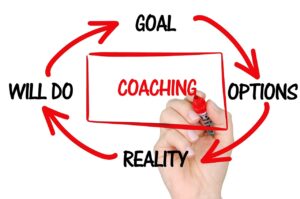What is the somatic feelings wheel, and how do you use it?
To dive into that, let’s cover the feelings wheel, the emotions wheel, somatics, somatics and the body, physical sensations, and how they all connect.
Table of Contents
ToggleWhat is the feelings wheel
The first step in the somatic feelings wheel involves identifying feelings and emotions.
A feelings wheel, also known as an emotion wheel or emotions wheel, is a visual tool. It helps individuals identify and express their emotions more precisely. The structured diagram places a wide range of feelings and emotions into different categories. This provides a framework for understanding and communicating one’s emotional state.
The core of a feelings wheel typically contains basic emotions like “happy,” “sad,” “angry,” “fear,” “disgust,” and “surprise.”
Radiating outward from the core are various subcategories or shades of those core emotions. For example, under the core emotion “happy,” you might find subcategories like “joyful,” “content,” “elated,” “excited,” and so on.
Feelings wheels can be especially helpful in improving emotional intelligence, self-awareness, and communication. They enable individuals to pinpoint and express their feelings more precisely.
Different versions of feelings wheels may exist, with variations in the number and specific categories of emotions they include, but the core purpose is to provide a structured and comprehensive way to explore and describe the complexity of human emotions. These tools are widely used in psychology, counseling, and self-help to promote emotional understanding and well-being.
https://www.somatopia.com/blog/the-emotions-wheel-or-the-feelings-wheel
When it was developed
Dr. Gloria Wilcox designed the brain behind the feeling wheel, created a nifty visual tool to help folks get a grip on, chat about, and even tweak their emotions.
Taking a cue from Joseph Zinker, who saw therapists as artists, and psychologist robert plutchik, who likened emotions to colors, Willcox decided to whip up the feelings wheel. She started with the Fab Four emotions: scared, sad, mad, and glad. To keep things all squared away, she split “glad” into three flavors: joyful, powerful, and peaceful.
With this well-balanced bunch in her pocket, she tied them to primary and secondary colors to cook up the core emotions on the inner wheel, the starting point for the outer circles. Just like emotions blend together, she painted the outer zones with fading shades of their inner buddies.
In her time as a therapist, Willcox noticed that folks often struggled to put their feelings into words. Society’s rules about what’s cool to express and what’s not made it tricky for them to open up about their emotions.
What is the emotions wheel
Feelings impact our emotional states. The goal of identifying feelings and emotional states is ultimately efficient emotional expression, which helps us not get stuck in cycles or negative thought patterns.
An emotions wheel, also known as an emotion wheel or feelings wheel, is a visual tool that categorizes and represents a wide range of emotions and feelings in a structured manner. It is designed to help individuals better understand and articulate their different emotions. Emotions wheels are often used in psychology, therapy, and self-help contexts.
The wheel typically consists of a central core emotion, such as “happy,” “sad,” or “angry,” and radiating outwards are various subcategories or shades of that core emotion. These subcategories provide a more nuanced and specific vocabulary for describing one’s emotional state. For example, under the core emotion “happy,” you might find subcategories like “joyful,” “content,” “elated,” “excited,” and so on.
When we can more quickly vocalize our internal experience, and we not only get to release difficult emotions, or negative emotions more quickly. BUT, we can also experience the POSITIVE emotions more deeply as well. Identifying feelings and emotions is the first step to then using the somatic feeling wheel.
Emotions wheels can be valuable tools for emotional intelligence, self-awareness, and communication. They offer a structured way to identify and express the complexity of human emotions. They can help individuals pinpoint and communicate their feelings more accurately, which can be particularly helpful in therapy, conflict resolution, and personal growth. You can find various versions of emotions wheels online, and they may vary in the number and specific categories of emotions they include.
https://allthefeelz.app/static/feelz/pdf/emotion_wheel_pdf__allthefeelz_dot_app.pdf
What is plutchik’s emotion wheel
Robert Plutchik’s emotion wheel, also known as the “Plutchik’s Wheel of Emotions,” is a psychological model that classifies human emotions based on a set of primary and secondary emotions. Plutchik was a psychologist and researcher who developed this model to better understand and categorize the complex array of human emotions.
The wheel is a helpful tool that typically consists of eight basic emotions, which are arranged in pairs of opposites:
1. Joy – Sadness
2. Trust – Disgust
3. Fear – Anger
4. Surprise – Anticipation
Each primary emotion is situated opposite its opposite emotion on the wheel. Plutchik’s theory suggests that these eight primary emotions are universal and serve as the foundation for all other emotions. In other words, all other emotions are combinations or variations of these primary emotions.
The model also includes secondary or blended emotions, which are formed by combining adjacent primary emotions on the wheel. For example, mixing joy and trust can result in love, while blending fear and surprise might produce submission.
Plutchik’s emotion wheel is a visual representation of his psychoevolutionary theory of emotions, which posits that emotions have evolved over time and serve adaptive functions. The model has been used to study and analyze human emotions in various fields, including psychology, sociology, and literature. It offers a comprehensive framework for understanding the intricate interplay of emotions in human experiences.
My own version of the feelings wheel
I made a simpler version of the feelings wheel using Canva, and my knowledge of somatics. You can find that in the video below.
What is somatic therapy?
Somatic therapy is a holistic approach to psychotherapy that places a strong emphasis on the mind-body connection. It recognizes that psychological issues and emotional well-being are closely tied to physical sensations, bodily experiences, and movements. The term “somatic” refers to the body, and somatic therapy involves working with the body to address emotional and psychological challenges.
Key elements and concepts of somatic therapy include:
1. Body Awareness: Somatic therapy helps individuals become more aware of their bodily sensations and how these sensations relate to their emotions and mental state. This heightened awareness can provide valuable insights into one’s emotional and psychological well-being.
2. Mind-Body Connection: It acknowledges that emotional and psychological distress can manifest physically in the form of muscle tension, pain, posture, and other somatic symptoms. Conversely, physical well-being can influence one’s mental and emotional state.
3. Trauma Resolution: Somatic therapy is often used in the treatment of trauma. Traumatic experiences can become stored in the body, and somatic therapy techniques aim to release this stored tension and trauma, promoting healing.
4. Body-Centered Techniques: Somatic therapists use a variety of body-centered techniques, such as breathwork, movement exercises, touch, and mindfulness practices, to help clients process and release emotions and tension stored in the body.
5. Holistic Healing: Somatic therapy takes a holistic approach, addressing both the body and the mind. It can be used to promote overall well-being and personal growth, not just to treat specific mental health issues.
6. Integration: Somatic therapy aims to integrate the physical, emotional, and cognitive aspects of a person’s experience, helping clients achieve a more balanced and harmonious relationship with their bodies and emotions.
What is somatic experiencing (SE)
Key aspects of Somatic Experiencing include:
1. Body-Oriented: Somatic Experiencing is a body-centered therapy that emphasizes the connection between the mind and the body. It focuses on the sensations and physical experiences related to traumatic or stressful events. Trauma is believed to disrupt the body’s natural self-regulation mechanisms, and SE aims to restore these mechanisms.
2. Regulation of Arousal: SE places a significant emphasis on the body’s autonomic nervous system, specifically the fight-flight-freeze responses. It helps individuals develop awareness and control over their physiological arousal, which is often dysregulated in trauma survivors.
3. Safety and Gradual Healing: The therapy is conducted in a safe and controlled environment, allowing individuals to gradually explore and process their traumatic or stressful experiences at their own pace. This approach minimizes the risk of re-traumatization.
4. Release of Trauma Energy: SE helps individuals release the physical and emotional tension that has been stored in the body as a result of traumatic experiences. This discharge of pent-up energy is considered essential for emotional healing.
5. Mindfulness and Awareness: Practicing mindfulness and increased awareness of bodily sensations are key components of Somatic Experiencing. This helps individuals reconnect with their bodies and the present moment, promoting emotional healing.
6. Holistic Approach: SE takes a holistic view of healing, considering the individual as a whole, addressing not only psychological but also physical and physiological aspects of trauma.
Somatic Experiencing is widely used in the treatment of post-traumatic stress disorder (PTSD) and various other trauma-related conditions. It is also used for personal growth and self-awareness, helping individuals manage stress and build resilience. Trained Somatic Experiencing practitioners work with clients to guide them through the process of releasing trauma and stress from their bodies, ultimately facilitating emotional healing and recovery.
What is the difference between somatic therapy, somatic coaching and somatic experiencing?
Somatic therapy, somatic coaching, and Somatic Experiencing are related approaches that focus on the mind-body connection and the role of the body in psychological and emotional well-being. While they share some common principles, they have distinct purposes and methodologies. Here are the key differences:
1. Somatic Therapy:
- Purpose: Somatic therapy is a broad term that encompasses various therapeutic approaches that consider the body’s role in emotional and psychological well-being. It aims to help individuals explore and resolve emotional issues, trauma, and stress by addressing the physical and bodily aspects of these experiences.
- Methodology: Somatic therapy can include various therapeutic modalities, such as Gestalt therapy, body-centered psychotherapy, and Hakomi therapy. It often involves talk therapy along with techniques that help individuals connect with and release emotional tension stored in the body.
- Applications: Somatic therapy seems useful for a wide range of psychological issues and personal growth. Licensed therapists, psychologists, and counselors seem likely to recommend it.
2. Somatic Coaching:
- Purpose: Somatic coaching, sometimes called somatic life coaching, is a form of coaching that integrates somatic principles to help individuals achieve personal and professional goals. It focuses on personal development, self-awareness, and behavioral change.
- Methodology: Somatic coaching combines coaching techniques with somatic practices. Coaches help clients become more aware of their body sensations, emotions, and physical responses to enhance their self-awareness and decision-making.
- Applications: Somatic coaching is commonly used in areas like leadership development, stress management, performance improvement, and achieving life goals. Somatic coaches work with individuals to enhance their overall well-being and effectiveness.
3. Somatic Experiencing:
- Purpose: Dr. Peter A. Levine developed this specific therapeutic approach, which primarily focuses on healing trauma and stress. It aims to help individuals process and release trapped trauma energy stored in the body, thereby promoting emotional healing and recovery.
- Methodology: Somatic Experiencing uses a structured and gradual approach that incorporates body awareness, the regulation of physiological arousal, and mindfulness techniques. It is conducted in a therapeutic setting with a trained Somatic Experiencing practitioner.
- Applications: Somatic Experiencing is primarily used in the treatment of trauma-related conditions like post-traumatic stress disorder (PTSD) and in addressing unresolved stress. It’s specifically designed to facilitate the release of trauma energy stored in the body.
In summary, somatic therapy, somatic coaching, and Somatic Experiencing all acknowledge the importance of the mind-body connection.
However, they each include distinct origins and methodologies.
Therapy is a broad category of therapeutic approaches.Coaching involves a form of coaching for personal development and self-awareness. Somatic Experiencing is a specific therapeutic approach for trauma healing.
Body Sensations Wheel
Before completing the somatic feelings wheel, we need the skill of identifying physical sensations in the body.
Dr. S. Colby Peters at Human Systems developed the body sensation wheel fairly recently. It includes a diagram of parts of your body, and descriptive words so you can vocalize your physical sensory experience.
Here’s an excerpt from his site:
The importance of sensations…
“According to my research and experience, identifying and processing sensations in my body is a critical skill for physical and emotional wellbeing because it helps me identify and process my emotions and needs, which helps me make better choices. Internal and external body sensations, such as those related to temperature and pressure, are a constant ingredient in my “emotional stew” (thoughts, experiences, and sensations), and increasing mindfulness around body sensations has led to my increased awareness and acceptance around my emotions and needs. Increased awareness of my emotions and needs has produced a myriad of benefits, including increases in my physical, mental, and spiritual wellbeing, as well as improvements in my relationships and systems.
The problem…
Unfortunately, I was conditioned to ignore sensations in my body (you may have had a similar experience). My inability to feel things in my body was compounded by past physical and mental trauma. Before I learned about the importance of being aware of sensations in my body, I tended to ignore or avoid my body as much as possible (no small feat, given that I have to carry it around with me wherever I go). I would disregard sensations until they became too painful to ignore and often required urgent medical attention. Even when I became more ready to pay attention to what my body needed to tell me and found that I now had the opportunity to more effectively process old and new hurts, I found that I did not have the language to do so.
I created the HS Body Sensations Wheels System to help us more easily identify our body sensations.”
https://humansystems.co/body-sensations-wheels/
Somatic Feelings Wheel
Time to tie it all together:
Once we understand our feelings, our emotional response, and then are able to get descriptions of the actual physical sensations, we can combine these practices for our own somatic healing.
Here are steps for combining these elements in the somatic feelings wheel:
Part 1: Find the feeling
Ground Yourself:
Start by grounding yourself in the present moment. This involves connecting with your body and your immediate surroundings, and establishing a sense of safety and presence.
Identify Feelings and Emotions:
Recognize and label the emotions. This step involves acknowledging the emotions inside you without judgment.
Find the Edges, and Lean into the Emotion:
Once you identify the emotion, explore it more deeply. Describe the intensity and boundaries of the emotion. Lean into it by experiencing, without holding back or avoiding it.
Part 2: Find the sensation
Identify Physical Sensation:
In this step, focus on the physical sensations that accompany the emotion. Emotions often manifest as bodily sensations such as tension, warmth, or changes in breath and heart rate.
Find the Edges, and Lean into the Physical Sensation:** Similar to the previous step, explore the physical sensations associated with the emotion. Observe the physical boundaries and intensity of these sensations, and allow yourself to fully experience them.
Get Curious:
Cultivate a curious and non-judgmental attitude toward your emotions and sensations. This curiosity encourages self-exploration and can lead to deeper insights and understanding.
Part 3: Find the resource
Identify Need:
Reflect on the underlying need or desire connected to the emotion. Emotions often signal unmet needs. Identifying the need is an essential part of the process.
Lean into the Feeling of the Need:
Fully embrace and experience the feeling associated with the unmet need. This step allows you to connect with the emotional aspect of the need.
Find the Physical Sensation:
Similar to the emotional aspect, also explore the physical sensations related to the unmet need. These sensations can provide additional insights into the nature of the need.
Closing
Remember that the process of somatic emotional release can be gradual and may require time and patience. Prioritize your safety and well-being, and consider using professional guidance, especially when dealing with deep-seated emotions or traumatic experiences.






